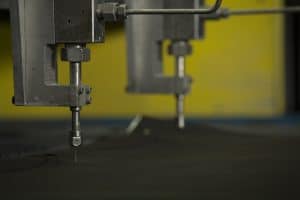Acoustic insulation 201 provides additional detail about the science of sound.
Acoustic insulation absorbs, transmits, or redirects sound – a form of energy that travels in waves. Some sounds are pleasant to hear, but others can harm human health, endanger workers, or contribute to structural fatigue. Undesirable sounds, or noise, have characteristics that designers of acoustic insulation need to understand. Without this knowledge, noise problems can cause design-related headaches.
Acoustic Insulation 201: The Consequences of Noise
From a scientific perspective, noise is indistinguishable from sound. Both are vibrations that travel through a medium such as air or water. The difference, of course, is in what happens when these vibrations reach a listener. In terms of human health, excessive noise can cause hearing loss and induce cardiovascular stress. Not surprisingly then, noise levels are regulated by government agencies and authorities.
In the workplace, noise can make it hard for workers to hear fire alarms or safety-related announcements. Noise can also impede concentration and interfere with employee communications. Loud or disruptive sounds are problematic, but so are sound-induced vibrations that cause structural fatigue and stress concentrations in parts, assemblies, equipment, and buildings.
For engineers, acoustic insulation needs to ensure the safety and comfort of people, protect the life of engineered products, and support overall performance. There are financial incentives for noise control, too. Many customers want quieter vehicles, machinery, and equipment. Buyers also need to comply with occupational health and safety requirements to avoid fines and penalties.
Acoustic Insulation 201: The Characteristics of Noise
Solving the problem of noise requires a basic understanding of sound. Noise, or sound, is a pressure wave that travels from a source through a medium to a receiver. The human ear detects variations in pressure caused by these sound waves. The amplitude of the variation, the noise level, is measured in decibels (dB). The speed of the change of the sound, the frequency, is measured in Hertz (Hz).
Sound pressure levels (SPL) use a logarithmic scale where the reference is the threshold of hearing. To a person with normal hearing, a 1 dB increase in noise level is barely perceptible; an increase of 3 dB is clearly perceptible. If the noise level increases by 10 dB, the sound will seem twice as loud. Yet an increase of 20 dB doesn’t mean that the noise level will seem twice as loud as a 10 dB increase.
What does this mean for product designers who need to reduce noise levels? How great of a reduction in decibels do you need to achieve? The following table describes the relationship between decibel reduction and sound power.
Reducing the noise level by | Reduces the sound power by |
1 dB | 21% |
3 dB | 50% |
10 dB | 90% |
20 dB | 99% |
Decibel-Level Differences Between Noise Sources
In environments such as machine rooms and manufacturing facilities, engineers must also consider decibel-level differences between noise sources. For example, let’s say that two machines are running in the same room and that each machine has a noise level of 90 dB. Machine 1 continues to run at 90 dB, but the noise level for Machine 2 increases.
The following table explains how machine room personnel will perceive these sounds. Note that A-weighted decibels (dBA) are an expression of the relative loudness of sounds in air.
Machine 1 | Machine 2 | Total Noise Level | Explanation |
90 dBA | 90 dBA | 93 dBA | When Machines 1 and 2 produce the same noise level (90 dBA), the total noise level is 93 dBA. |
90 dBA | 95 dBA | 96 dBA | When Machine 2 is 5 dB louder than Machine 1, the total noise level is just 1 dBA louder than the loudest machine. |
90 dBA | 100 dBA | 100 dBA | When Machine 2 is 10 dB louder than Machine 1, the total noise level is the same as the loudest machine. |
Ask Elasto Proxy About Acoustic Insulation
Next week, we’ll continue our series about acoustic insulation and the science of sound. Would you like samples of acoustic insulation that you can see for yourself and hold in your hand? Then ask for the Elasto Bag.










